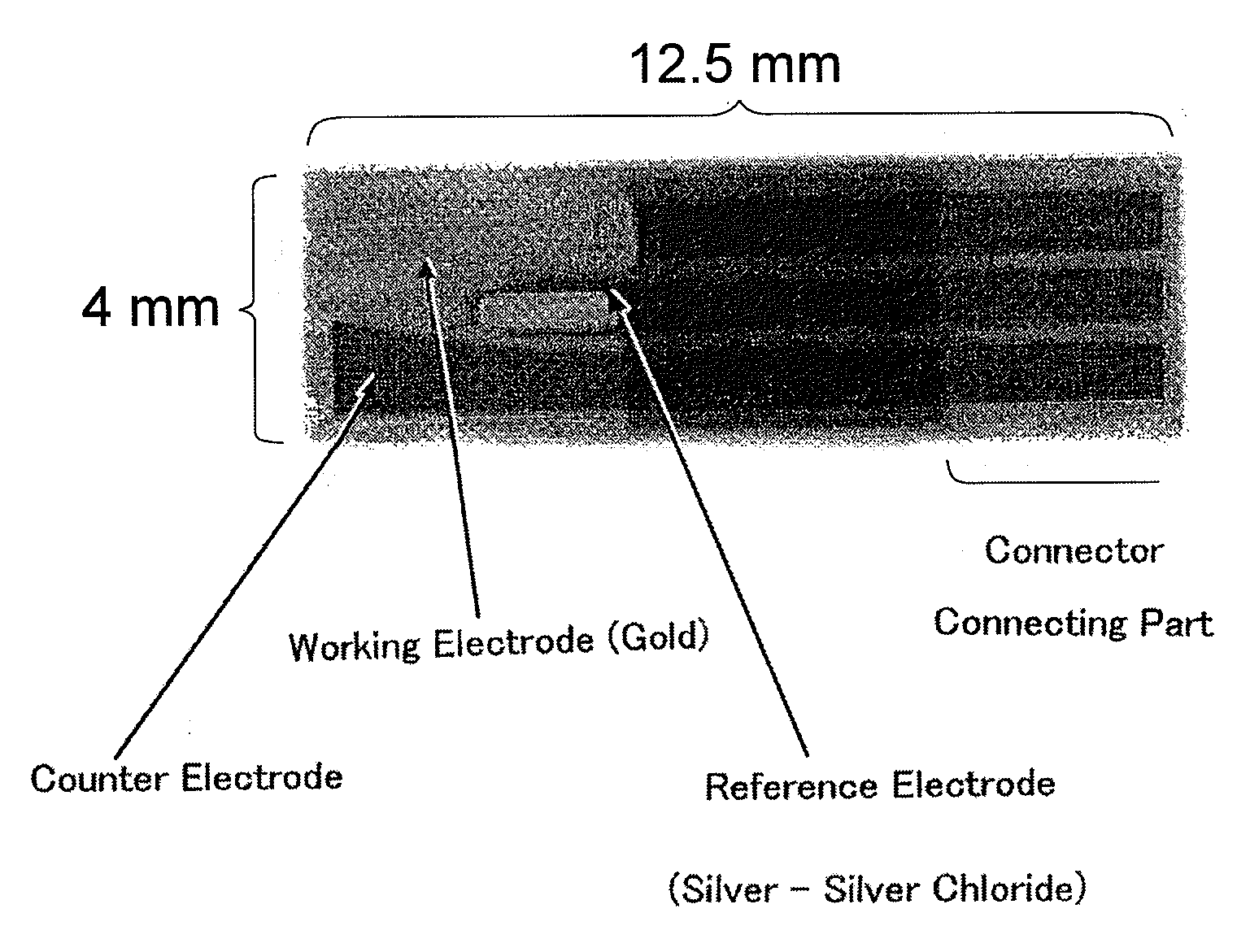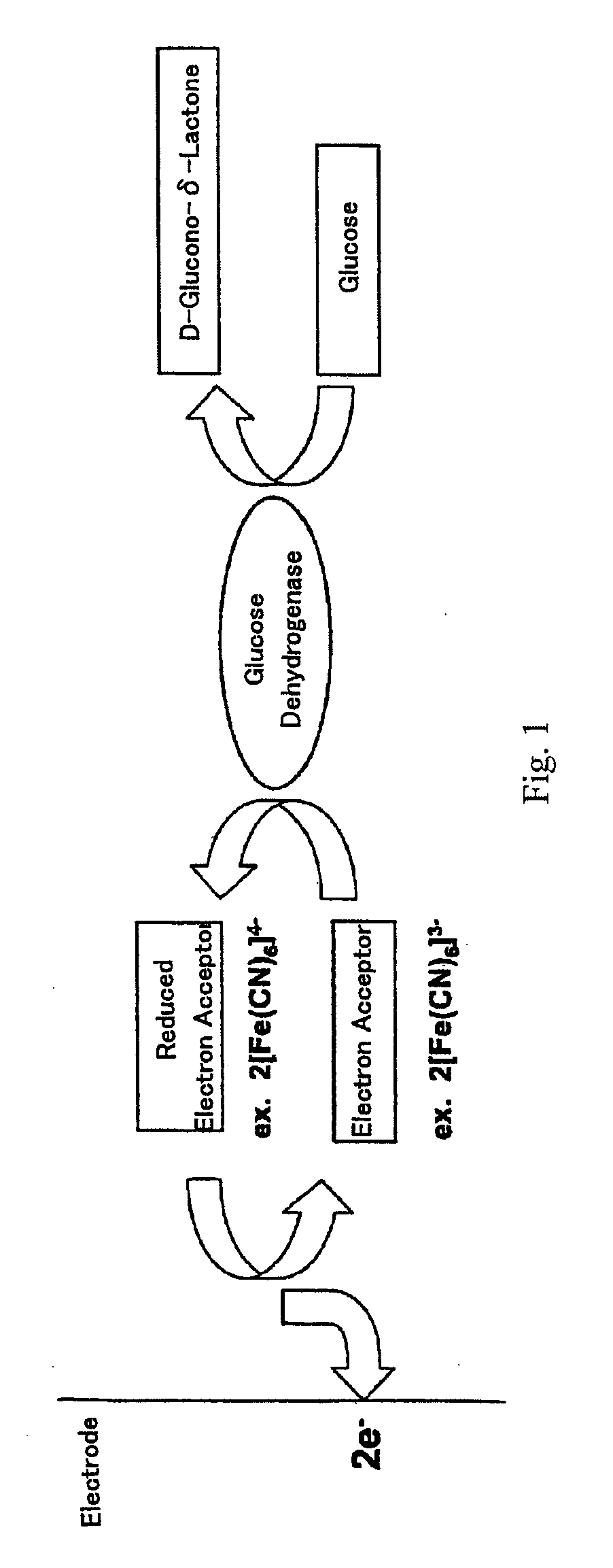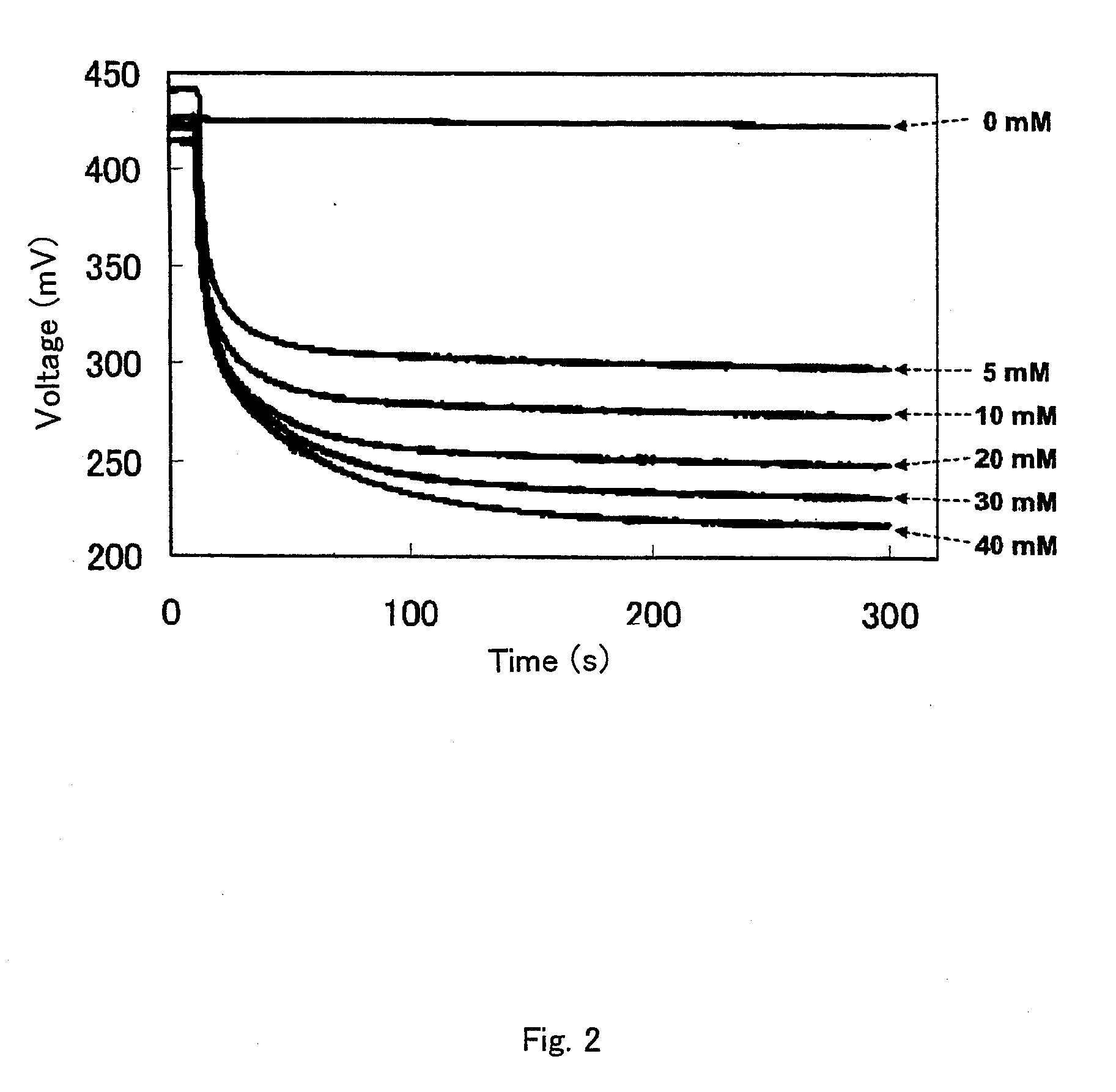Electrochemical method for glucose quantification, glucose dehydrogenase composition, and electrochemical sensor for glucose measurement
- Summary
- Abstract
- Description
- Claims
- Application Information
AI Technical Summary
Benefits of technology
Problems solved by technology
Method used
Image
Examples
example 1
[0130]200 μl of a 500 mM potassium ferricyanide solution (final concentration of 100 mM) and 11.4 μl of 10.6 kU / ml FAD-dependent glucose dehydrogenase (corresponding to 120 U) were added to a 2-ml water-jacketed glass cell (BAS). A 100 mM phosphate buffer (pH 7.0) was further added thereto to result in a total volume of 1.2 ml including the volume of a 1 M glucose solution to be added later. The mixture was slowly stirred using a stirrer. One having the mutation of G163R+V551C in SEQ ID NO:2 was used as the FAD-dependent glucose dehydrogenase. The temperature was made constant at 30° C. during the enzymatic reaction by circulating water maintained at 30° C. in a thermostat bath through the water jacket part.
[0131]PTE platinum electrode (6.0×1.6 mm; BAS) was used as a working electrode, and RE-1C saturated KCl silver-silver chloride reference electrode (BAS) was used as a reference electrode. These electrodes were placed so that they were immersed in the above-mentioned solution and ...
example 3
[0140]An enzymatic reaction was conducted as described in Example 1 further adding as an additive one of triethanolamine, Tricine, imidazole and collidine at a final concentration of 7 mM.
[0141]A working electrode and a reference electrode were set as described in Example 1 and connected to the general-purpose electrochemical measurement apparatus. Then, 2.4, 4.8, 7.2, 9.6 or 12 μl of a 1 M glucose solution was added thereto, and the electric potential value was immediately measured over time in each case. The glucose concentrations in the reaction systems were 2, 4, 6, 8 and 10 mM, respectively. Blank measurement was also conducted without the addition of glucose. As an example, the measurement results for the addition of Tricine are shown in FIG. 8. It was observed that as the enzymatic reaction proceeded, the electric potential declined over time and became steady after a while. It was confirmed that the increased amount of glucose added as a substrate resulted in the greater dec...
example 4
[0143]Furthermore, reaction selectivity for xylose was examined using various conditions. Measurements were conducted as described in Example 3 adding glucose or xylose at a final concentration of 5 mM. The ratios of decreased electric potentials observed upon measurements using xylose or glucose were calculated and are shown in FIG. 10. The effect of increasing the reaction selectivity for xylose was shown particularly when triethanolamine or imidazole was used.
PUM
 Login to View More
Login to View More Abstract
Description
Claims
Application Information
 Login to View More
Login to View More - R&D
- Intellectual Property
- Life Sciences
- Materials
- Tech Scout
- Unparalleled Data Quality
- Higher Quality Content
- 60% Fewer Hallucinations
Browse by: Latest US Patents, China's latest patents, Technical Efficacy Thesaurus, Application Domain, Technology Topic, Popular Technical Reports.
© 2025 PatSnap. All rights reserved.Legal|Privacy policy|Modern Slavery Act Transparency Statement|Sitemap|About US| Contact US: help@patsnap.com



